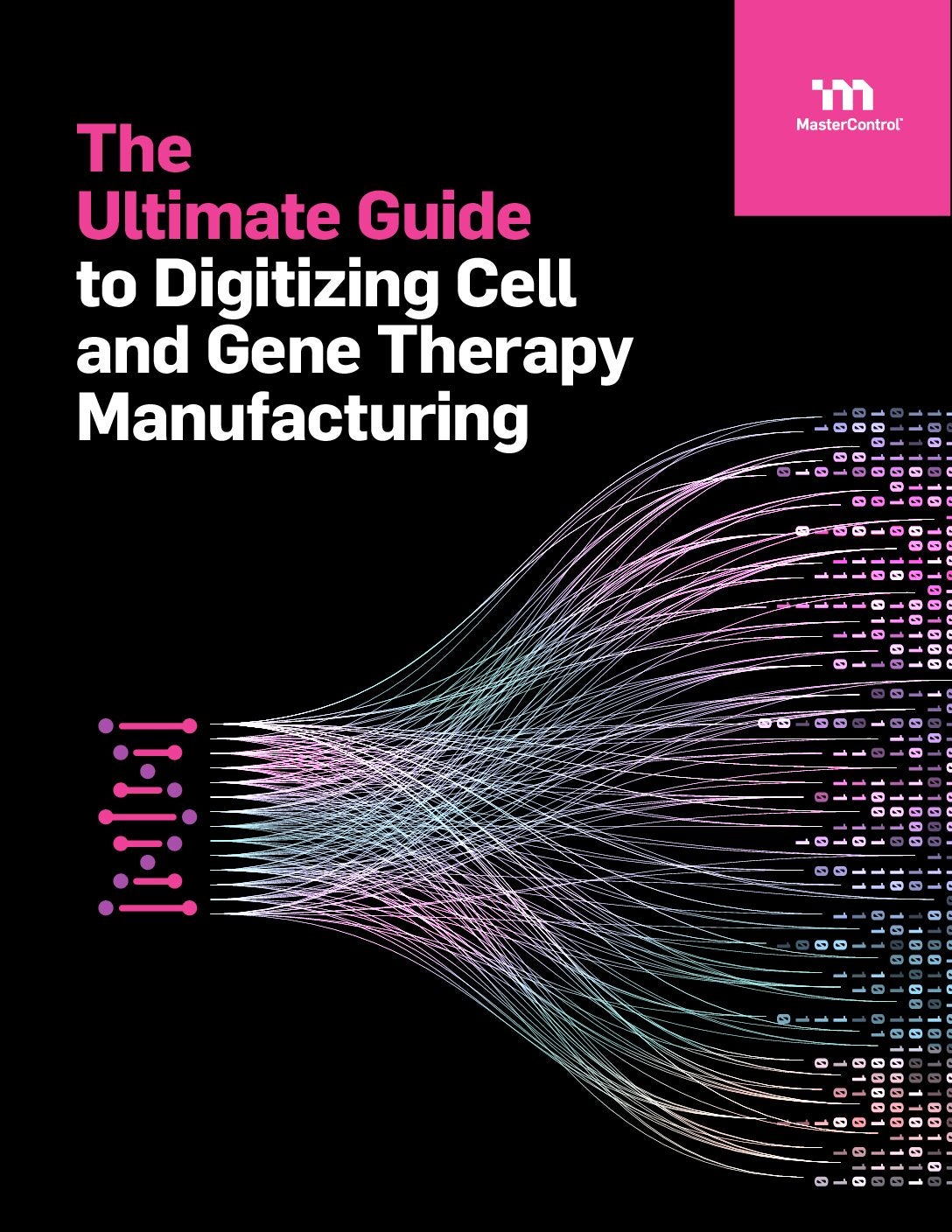
Cell and gene manufacturing isn’t like making aspirin or statins. It’s personalised medicine that requires manufacturers to assert unprecedented flexibility while navigating strict regulations. When your starting material is a patient’s own cells and your end product needs to be back in their body within days, adaptability and compliance can’t be “either/or” – they must be “both/and.”
The flexibility-compliance balancing act
Traditional pharma manufacturing demands consistency. CGT thrives on adaptability. Every patient-specific autologous therapy represents a unique challenge where a minor error could have major, life-altering consequences. Meanwhile, because novel therapies and the technologies used to develop them are still in their nascency, regulators are writing the rulebook as they go.
“Right First Time. Right On Time.” This isn’t just a clever phrase – it’s life-critical in the CGT world. When a child’s morning blood draw becomes their evening life-saving cell therapy infusion, manufacturing must keep pace with demand without cutting compliance corners.
Process flexibility and variability: key challenges in CGT manufacturing
What makes CGT manufacturing so difficult? The challenges can be broken down into four principal categories. These are:
1. Inherent variability in starting materials
Unlike traditional pharmaceuticals with consistent ingredients, cell and gene therapies begin with variable patient cells. No two starting materials are identical, requiring workflows that can adapt while maintaining compliance.
2. Rapid process evolution
CGT production techniques evolve constantly. Cell and gene therapy manufacturing organisations need the ability to update procedures quickly without getting tangled in compliance red tape.
3. Scaling challenges
The leap from clinical to commercial manufacturing isn’t just bigger batches – it’s a completely new paradigm. According to MasterControl’s Ultimate Guide to Digitising Cell and Gene Therapy Manufacturing, 40% of advanced therapy executives aren’t confident they can meet demand over the next three years. When scaling means maintaining consistency across variable processes, that uncertainty makes sense.
4. Documentation burden
Hundreds of pages per batch record? That’s a reality in cell and gene therapy manufacturing. Studies noted in MasterControl’s guide show manual documentation is only 91% accurate. Such inaccuracies create compliance risks and slow down processes when speed matters most.
Building flexibility into CGT manufacturing while maintaining compliance
You can tackle these challenges head-on by taking four essential steps toward process modernization:
1. Implement purpose-built MES solutions
Legacy manufacturing execution systems (MES) were built for making thousands of identical tablets – not personalised cell therapies. Modern MES for cell and gene therapy manufacturing must handle variability while enforcing compliance.
MasterControl Manufacturing Excellence (Mx) adapts to changing CGT workflows while maintaining regulatory guardrails. This means you can:
- Create configurable workflows that handle process variability.
- Make real-time adjustments based on in-process results.
- Track every step from collection to infusion.
- Enforce compliance at critical process points.
Digital systems built specifically for CGT manufacturing give you startup agility with big pharma compliance confidence.
2. Establish quality at the source
Quality isn’t something you inspect at the end – it’s something you need to continuously build and maintain throughout your production processes. Leading CGT manufacturers embed quality in every step by ensuring:
Connected Compliance: Cell and gene compliance isn’t a separate function – it must be integrated into every process. A purpose-built digital system enforces GMP requirements in real time.
Real-Time Deviation Management: When exceptions happen (and in variable processes, they will), digital systems trigger appropriate reviews instantly.
Right-First-Time Execution: Clear digital instructions and automated data entry dramatically cut errors while accommodating necessary variations.
Automated Data Verification: Built-in integrity checks ensure compliance while allowing the flexibility cell and gene therapy manufacturing demands.
3. Leverage digital data for process understanding and Improvement
According to MasterControl’s guide, “Implementation of AI tools and automation technologies could increase efficiency by more than 40%, as one CAR-T therapy developer recently did, yet many companies still rely on manual processes.”
Digital data capture lets you:
- Spot variability patterns that impact quality.
- Set flexible parameters within compliance boundaries.
- Continuously refine processes based on real outcomes.
- Make evidence-based decisions about process changes.
These insights help you determine where flexibility helps and where stricter controls matter.
4. Create digital connectivity across operations
Digitally savvy CGT manufacturers connect systems, processes, and teams seamlessly. Their forward-thinking initiatives focus on:
- ERP integration: pull material information into batch records automatically.
- Equipment connectivity: monitor equipment status and maintenance in real time.
- Laboratory integration: Transfer analytical results directly to batch records.
- Chain of identity: Track patient-specific materials digitally.
- Supply chain visibility: Trace materials and products end-to-end.
This higher level of connectivity plays a key role in cell and gene therapy software’s ability to meet compliance requirements while maintaining the agility needed to handle process variability.
Regulatory considerations for flexible CGT manufacturing
Building flexibility into CGT manufacturing means understanding how regulators approach these innovative therapies, including the following factors:
Evolving regulatory framework
The US Food and Drug Administration (FDA) and European Medicines Agency (EMA) have developed specific CGT/ATMP (advanced therapy medicinal product) guidance, mostly since 2017. These frameworks, which are evolving, acknowledge the unique nature of these products while ensuring safety standards aren’t compromised.
Comparability strategies
When processes change (and in CGT, they inevitably will), you need robust comparability evidence. Digital systems that capture comprehensive data provide the proof regulators need that changes don’t hurt product quality.
Process validation approach
Fixed-parameter validation doesn’t work for variable CGT processes. Instead, cell and gene manufacturing organisations must establish a validation strategy that:
- Defines appropriate ranges for critical parameters.
- Builds control strategies that accommodate variability.
- Implements continuous verification.
- Documents rationale for flexibility where needed.
Real-world impact: the MasterControl advantage
Organisations using MasterControl’s solutions see remarkable results balancing flexibility and compliance, such as:
- 75% reduction in batch review time: made possible by review-by-exception capabilities that preclude the need for document-by-document review.
- 90% decrease in data integrity errors: automated data capture catches problems before they compound.
- 25% decrease in deviations: clear digital instructions prevent errors before they happen.
The future of flexible, compliant CGT manufacturing
With the cell and gene therapy market projected to reach $177.46bn by 2034 (18.7% Compound annual growth rate), as noted in MasterControl’s guide, manufacturers need solutions that facilitate fast and flexible operations without compliance compromises. Patient lives depend on getting this balance right.
Digital solutions like MasterControl’s create this foundation—helping CGT innovators deliver transformative treatments with speed, quality, and compliance.
The path forward is clear: invest in purpose-built digital systems, build quality into every step, and use data to drive continuous improvement. The result? Manufacturing that’s as innovative as the therapies themselves.
Download MasterControl’s Ultimate Guide to Digitising Cell and Gene Therapy Manufacturing and discover how to optimise CGT processes using AI and automation while maintaining compliance.




